Plumbing fittings: types, selection criteria and installation
It’s unlikely that anyone thinks about what plumbing fixtures are.But as soon as the need arises to repair the water supply or sewer network, everyone begins to delve into the design of these systems. And they are necessarily faced with the choice of parts and components for them.
The content of the article:
What are plumbing fittings
First of all, it is necessary to indicate that there is a term - plumbing, also known as sanitary equipment. It includes a wide range of devices that are part of water supply and sewerage systems. For example, a toilet, sinks and sinks, bathtubs and showers. Here you also need to add all the nodes with which the devices connect to pipes. This group is called plumbing fittings.
It is widely represented on the market. There is a special classification where everything plumbing fixtures are divided into groups:
- shut-off valves;
- shut-off and regulating;
- safety;
- distribution;
- mixing;
- phase separating;
- protective.
The first two groups are the largest. They include a large number of plumbing fixtures. The most common: taps, gate valves, valves and regulators of various types. Their purpose is to block the medium (liquid or gas) passing through the pipework. And also additional functionality - to regulate the amount and speed of movement of the medium.
Shut-off valves ensure the correct and efficient operation of plumbing fixtures. But this does not mean that other species cannot be exploited when using it. For example, mixers.
The latter, which belong to the distribution-mixing variety, are used to mix two or more streams. Or distribution of one stream into several.
Safety valves are protection, for example, from excess pressure that occurs in heating networks when the coolant overheats. In this case it is reset. This group includes safety valves, structures and devices of explosive action, and others.
What are the main types of plumbing fittings?
There is no exact classification. The reason is simple - each type has properties and functions that overlap with other types and subtypes. That is, the functionality may differ, but the devices are similar in appearance and operating principle.
Gate valves can be used as an example. There are a large number of varieties based only on the method of closing. But in essence, these fittings perform one function - they close or open the pipeline.
And yet there is a need to somehow distinguish different types of plumbing fixtures from each other. At least in order to understand in what places which one should be installed. After all, the correct and efficient operation of plumbing fixtures often depends on this.
Experts divide all plumbing fixtures into two large classes, with the help of which:
- the medium is supplied to the pipelines.
- the medium is diverted from the main circuit.
Otherwise, everything is divided according to different principles.
By design
There are four positions here:
- Cranes.With their help, the flow of the medium, mainly liquid, is blocked. Although there are still gas taps. They are divided according to the configuration of the functional element: locking and ball. The former are further divided into cylindrical and cone-shaped. Each has a different seat or closure configuration. The group also includes taps, with the help of which liquid is redistributed. These are the so-called three-way models.
- Valves. They belong to the group of sanitary shut-off valves. They cannot be used to regulate flows. They work to open or close. Therefore, their locking mechanism moves across the axis of the pipeline. There is a wide variety of locking mechanisms: wedge, gate, knife and even hose.
- Valves. This group also includes valves that are called poppet valves because their closing device resembles a poppet. It is located parallel or at an angle to the axis of the pipeline. Diaphragm valves stand out especially in this category. They got their name from the type of locking mechanism, which is an elastic membrane. Using valves, you can adjust the flow of the flowing medium.
- Shutters. This is a type of sanitary fittings in which a disk is installed. It rotates around an axis located perpendicular to the axis of the pipeline contour. It is this arrangement and fastening that creates minimal hydraulic resistance.
By functionality
This is a broader classification of plumbing fixtures, because each type has its own purpose:
- Constipated. These include: butterfly valves, gate valves, valves, Ball Valves. They can only block pipes. It is impossible to regulate the flow of the medium.The production of products is based on GOST number 9544-2005. The document has a title: “Pipeline shut-off valves. Classes and standards of tightness of valves.” Here the main emphasis is on tightness. She must be tall.
- Regulatory. These fittings are used to regulate the characteristics of the medium moving through the pipelines. This could be pressure, temperature, speed. The representative of the category is the pressure regulator. All models are divided according to the method of opening the working mechanism into mechanical, electrical, hydraulic, pneumatic, electronic.
- Shut-off and regulating. It's like two in one. Fittings of this type can completely block pipes and also regulate the parameters of the moving medium. For example, dampers, regulators, and valves are universal.
- Safety. It is mainly designed to protect pipelines from overpressure. This type of valve simply releases pressure if necessary. And this happens automatically. The group includes safety valves (they are either lever or spring), impulse fuses and other devices.
- Distribution and mixing. Purpose – redirection of flow, mixing two media in one direction. This includes regular faucets, bellows-type temperature regulators and other plumbing products.
- Disabling, it is also protective. If the characteristics of the moving medium change significantly, then fittings of this type turn off the device, cutting it off from the pipeline circuit. This protects the plumbing from damage. This group includes filters, boiler-type valves, and switches.
- Reverse. Basically, this category includes valves of various types: rotary, ball, poppet and others.They ensure the movement of liquids or gases in the opposite direction, if such a need arises. Depending on the method of operation, products can be manual or automatic.
- Phase separation. The purpose is to separate flows of different media or their phases, which differ from each other in parameters. This includes water and condensate drains, separators.
- Plumbing control fittings. With its help, the parameters of the liquid or gas flowing through the pipes are controlled: pressure, quantity, that is, volume, temperature, etc. Representatives - drain taps and valves.
Control options
There are 4 options here:
- Manual. The simplest and most common. Especially in domestic piping circuits.
- Remote control. The essence of this type of fittings is that in addition to the device itself, the kit includes an adapter that monitors the parameters. It is from it, that is, at a distance, that control, adjustment and other actions take place.
- Drive option. This is still the same manual model, only it has an electric, pneumatic or hydraulic drive.
- Auto. The devices operate on the energy generated by the medium flowing through the pipeline. Some models use additional energy sources.
Sealing coefficient
There are also four groups:
- Stuffing box is the most common type in household plumbing fittings. The design feature is direct contact with the closing mechanism, because it is part of the device. Installed in taps, valves, gate valves, valves.
- Bellows group, in which the bellows unit is responsible for sealing.It has a corrugated shape. Plus - the block never rusts, hence the long service life of the plumbing fixtures. The principle of operation is a change in shape, which completely fills the lumen of the movement of the medium.
- Membrane variety. The design uses an elastic element called a membrane. It completely covers the passage, creating 100% tightness. It is installed in some models of valves, which are called diaphragm valves.
- Hose. The essence of the device is that it includes a hose through which the medium moves. When it is compressed, movement is blocked.
Installation options for plumbing fixtures
Manufacturers offer five methods for installing plumbing fixtures:
- Coupling, it's threaded. In everyday life, this is a frequently used type of plumbing fixture.
- Flanged. The name is derived from the flanges used to connect the fittings to the pipes. A simple method of fastening, detachable and high quality. A large number of devices are connected this way.
- Tsapkovy sanitary fittings. Essentially, this is the same threaded one. But in its design there is one element - a collar. The purpose is to create a tight joint. An o-ring or cuff is installed under it.
- Fitting, also known as nipple.
- Welded. Welding is required to attach fittings to pipes. Reliable fastening and 100% tightness.
What plumbing fittings are needed for polypropylene pipes?
Today polypropylene is the main material for pipes, which are used everywhere. They do not rust and do not change their internal cross-section due to salt deposits.The service life in cold water supply networks is 50 years, in hot water supply systems – 25 years. Withstands temperatures up to +95 ℃, pressure up to 20 bar. Installation is simple. The price is low compared to metal products.
This fully applies to sanitary fittings made of polypropylene. The main method of connection is welding. Some types are connected using a threaded method. The diameter of the products does not exceed 160 mm.
Couplings
This is a universal part used for joining reinforced and unreinforced pipes located on the same axis. Connection method: socket welding or threaded method.
There are several modifications of polypropylene couplings:
- a straight line used to connect pipes of the same diameter;
- transitional - for pipes with different diameters;
- combined - with internal metal thread on one side;
- the same as the previous one, only the design has a turnkey metal ledge;
- combined with external thread;
- as the previous one, only turnkey;
- American – detachable coupling with internal or external thread;
- with union nut.
Manufacturers also offer so-called American women, made entirely of polypropylene. They are called acidic. They are installed in pipelines through which active substances move. They can also be installed in water supply networks and gas circuits.
Crosses and tees
This type of fittings is designed for connecting pipes into branched circuits. Here you can find completely plastic products, combined with external or internal threads, with a union nut.
Crosses help connect four pipe circuits that are joined at right angles. Tees connect three pipes. The joining angle can be not only straight.
Bends
Bends, also known as corners or turns, are used when connecting polypropylene pipes into complex contours. Manufacturers produce two varieties:
- at an angle of 90º;
- at an angle of 45º.
Installation is carried out only by welding. There are no combination options in this category.
Ball valve
This is one of the types of pipeline tap. With its help, you can not only shut off the pipe system, but also regulate the flow of the medium. The design feature is a ball as a locking mechanism. The model is over a hundred years old, but in those days there was no technology that would ensure 100% tightness of the structure.
General installation rules
There are certain requirements for the installation of plumbing fixtures. If you adhere to them, you can guarantee its trouble-free operation for many years:
- If it is necessary to equip a gas pipeline with plumbing fittings, then options specifically for gas are selected. In gas systems with low pressure, water seals can be installed.
- You cannot install other types or types of shut-off valves in places where shut-off valves are installed. For example, regulatory ones.
- In fittings with a diameter of up to 80 mm, there must be an arrow on the body indicating the direction of movement of the medium.
- Installation work is carried out strictly in accordance with SNiP under number 2.04.01-85. There is another set of norms and rules numbered 3.05.01-85, which indicates the installation heights of plumbing fixtures.
- Valves and faucets must be installed so that the liquid passing through them flows underneath them.
- Check valves are mounted strictly either vertically or horizontally. No bending.
- Water meters are installed at a height of 30-100 cm. The installation line is horizontal.
These are just a few recommendations for installing plumbing fixtures.There are many of them, each type has its own rules. For the most part they are the same, but there are also serious differences.
How to choose the best plumbing pipes and fixtures to last forever
Water is the source of life, but it is also the cause of huge disasters. To prevent the second from happening in your home, you need to choose the right pipes and plumbing fixtures.
Pipes
Here it is necessary to recall that pipes in houses and apartments are subject to different loads. This is mainly the temperature of the water flowing through them: cold and hot water supply, heating. Each system uses its own pipes. But if products for hot water supply are also suitable for cold water supply, then the other way around is not the case. On the market you can purchase so-called universal analogues suitable for any network.
Today manufacturers We offer different types of pipes:
- steel;
- made of stainless steel;
- copper;
- metal-plastic;
- polyethylene;
- polyvinyl chloride;
- polypropylene.
The former are mainly used for laying gas pipelines. The second and third options can be used everywhere. But this pleasure is not cheap. Although the service life is impressive. All three metal pipes are highly durable and can withstand high pressure and water hammer. The downside is not only the price, but also the complexity of installation.
Plastic pipes, especially polypropylene, are at the peak of popularity today. Causes:
- low price;
- ease of installation;
- withstands pressure up to 20 bar, temperature up to 95 ºС;
- guaranteed service life of 50 years, which is ideal for such a price;
- the cross-section does not decrease during operation;
- The appearance is beautiful and does not require painting.
Armature
The functionality of plumbing fixtures is determined by the plumbing fixtures. Therefore, it is important to choose it correctly.And the first piece of advice is to buy only good quality products from well-known manufacturers that have proven themselves for a long time. Such fittings are not cheap. But this is precisely the moment when saving is not worth it.
Today, preference is increasingly being given to new products. For example, instead of standard valves and gate valves, ball valves are installed. Small dimensions, high reliability, 100% tightness, ease of installation - this is not a complete list of advantages over other elements of plumbing fixtures of this type.
Competition for ball valves comes from butterfly valves. They are cheaper and weigh less. But in terms of technical characteristics, they are not inferior to ball valves.
The correct choice of high-quality plumbing fixtures, pipes and plumbing fittings is a guarantee of long-term operation of pipeline networks. This is high safety and comfort, 100% protection against leaks and other troubles that usually occur unexpectedly.
Did you know that there are so many types of plumbing fittings? Write in the comments. Save the material in bookmarks so as not to lose useful information.
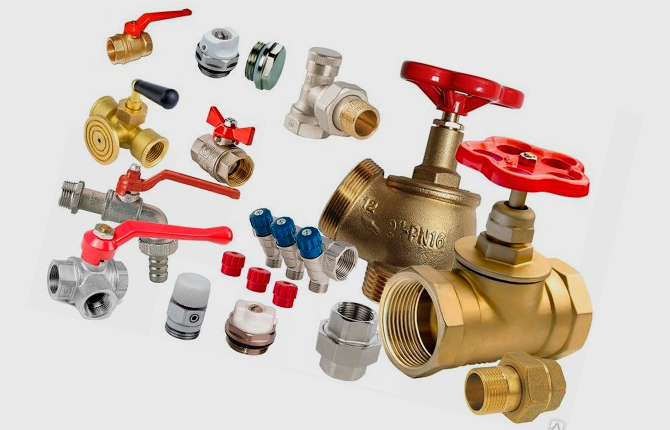
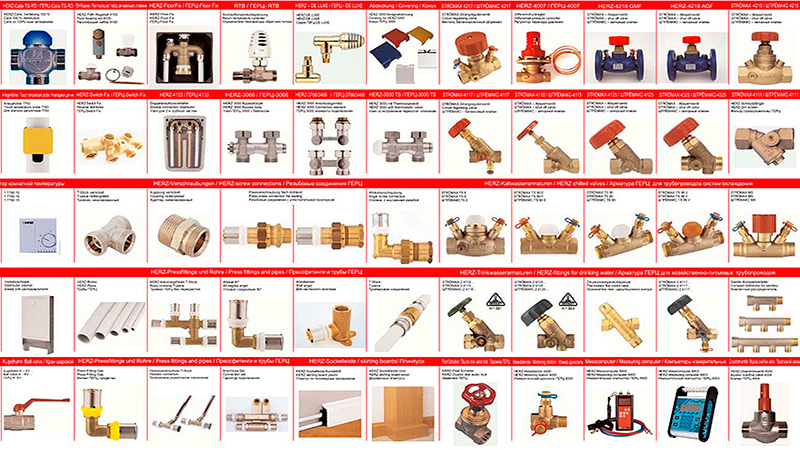

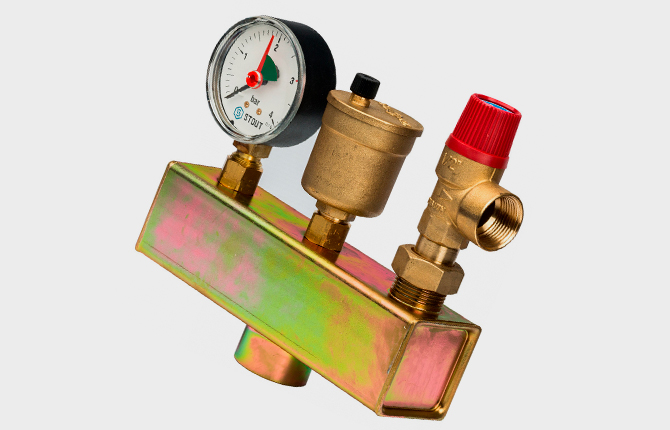
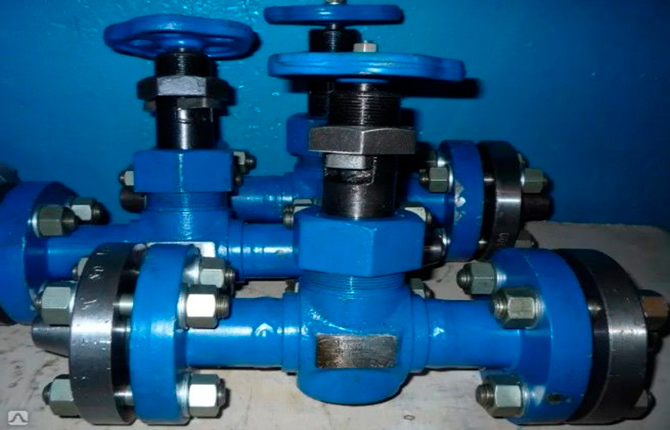
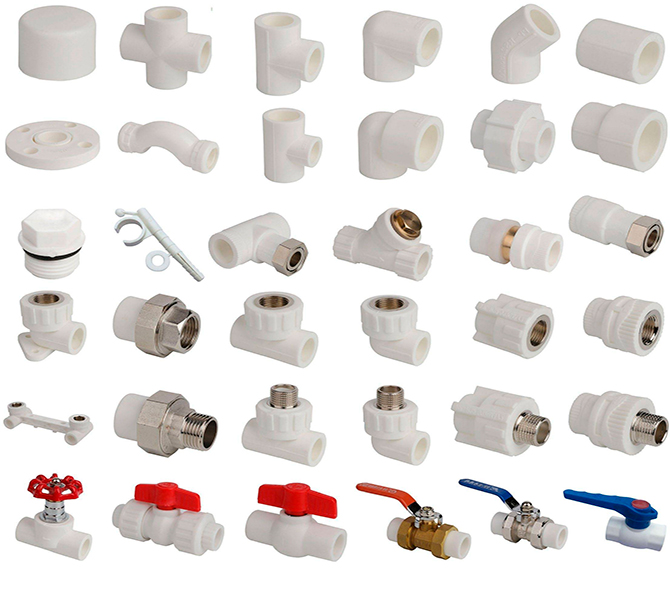
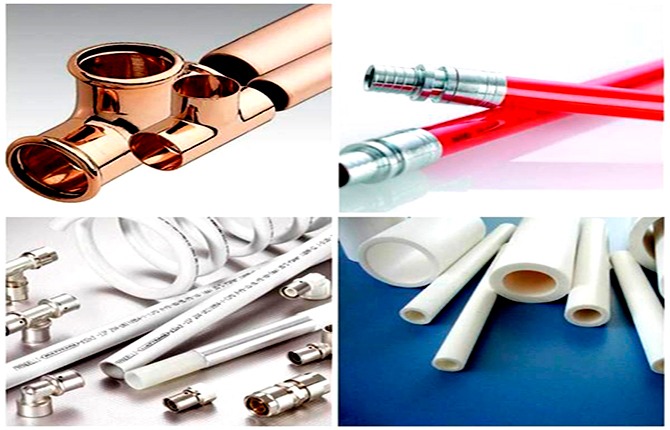




The quality of the fittings is an important component of properly assembled pipelines. There is no point in arguing with this. This is the law. So don’t buy cheap products that will last a couple of years and start siphoning.
I didn’t know there was such a large amount of plumbing fixtures. Well, taps, valves and other household appliances are known. And there is also a control, phase separation. It's even difficult to pronounce.